This article was published in Scientific American’s former blog network and reflects the views of the author, not necessarily those of Scientific American
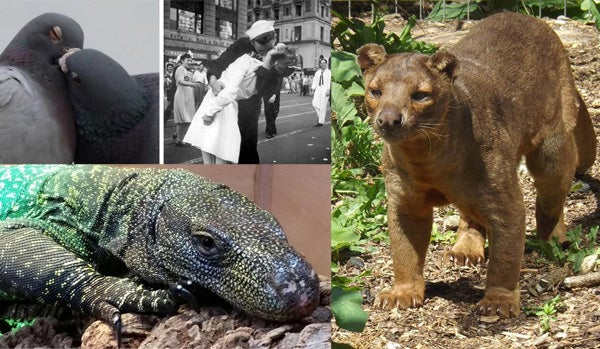
Some select scenes from 2015. I forgot who did the pigeon montage - please remind me. Lower left: captive Crocodile monitor Varanus salvadorii (unfortunately with unpleasant snout damage). Far right: Fossa Cryptoprocta ferox at Marwell Wildlife. Photos by Darren Naish (except for one in upper middle).
One of Tet Zoo’s most popular and influential articles – even though it concerns damage limitation and an effort to minimise mis-education more than my sharing of information – is the 2012 one about David Peters and his pet ideas and observations. As stated in that 2012 article, Peters is unstinting in his plans to get his hypotheses accepted and taken as superior to the hypotheses published in the technical literature by credited scientists. Credited scientists who have had their work critically examined by their peers, have spent time poring over actual fossils (rather than photos of them), and have (typically) had their observations checked or seconded. And when Peters write about things where I have direct experience – examples come from his takes on tyrannosauroid and paravian theropods – I see significant errors involving numerous aspects of anatomy.
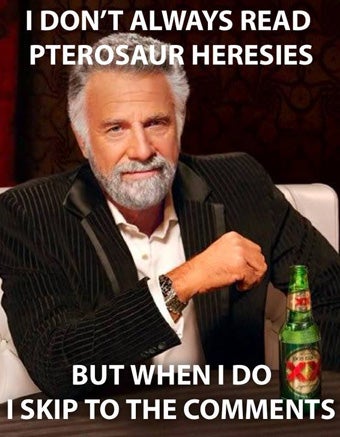
Thanks to the nameless originator.
On supporting science journalism
If you're enjoying this article, consider supporting our award-winning journalism by subscribing. By purchasing a subscription you are helping to ensure the future of impactful stories about the discoveries and ideas shaping our world today.
The ubiquity of Peters’s Pet Projects online can’t be under-estimated: online searches for just about everything involving tetrapod evolution are contaminated by his stuff.
In the age of the internet, I regret that I’m one of those people for whom “just ignore it” is not a viable response. Yes, professionals might not be duped, or might be able to spot the errors, but lay-readers generally are not, and you either care about public education or you don’t.
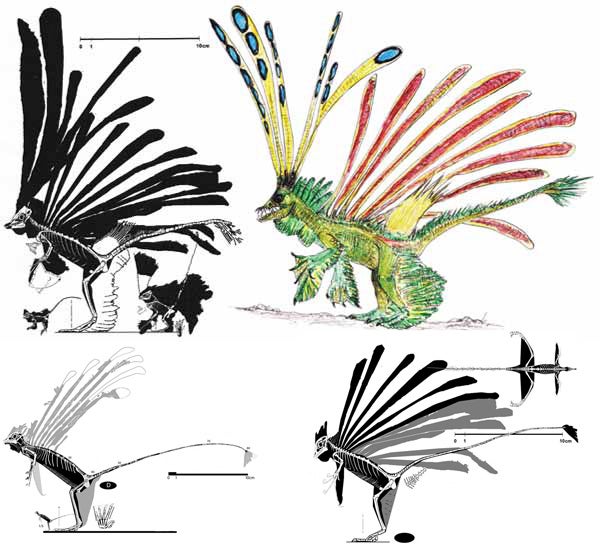
Various guises of Longisquama as promoted at Reptile Evolution and/or the Pterosaur Heresies blog. At top right is my attempt to depict the Peters reconstruction at top left (again: no, I was not "lampooning" him). Both at lower left and lower right are newer reconstructions of the beast promoted since - I think the newest one is at lower left (note the tiny baby). Skeletals by David Peters.
For this reason the Peters phenomenon is of wider interest among those who monitor internet culture. During June 2015, writer Graham Templeton wrote an article for Motherboard on Peters and his output. I opted not to help out, since I think I’ve said too much already on this subject. The article was published here and does provide appropriate linkage to the 2012 Tet Zoo article.
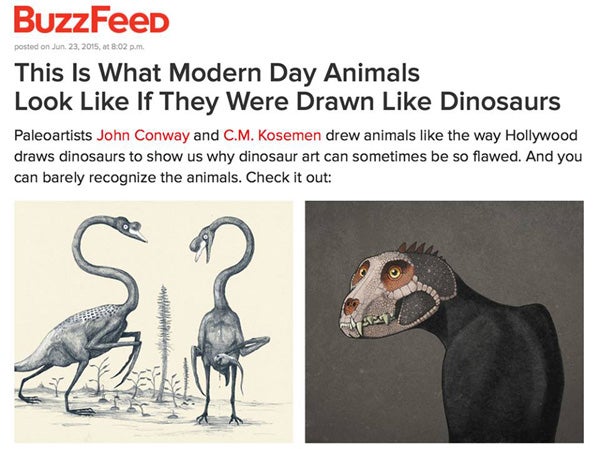
June 2015 also saw Buzzfeed’s Natasha Umer covering All Yesterdays (yes, a book published in 2012, ok). As per usual, the article focused on the contention, made in the book, that many modern animals would not look as they actually do if reconstructed in the shrink-wrapped style typical of palaeontological convention. Several palaeontologists have responded angrily to this claim – evidently because they object to the implication that palaeontologists are clueless as goes the soft tissue anatomy of extinct animals – whereas what we actually say is that it’s the size and extent of musculature, and the precise distribution of integument, that remains the ‘great unknown’, not more basic stuff concerning overall form.
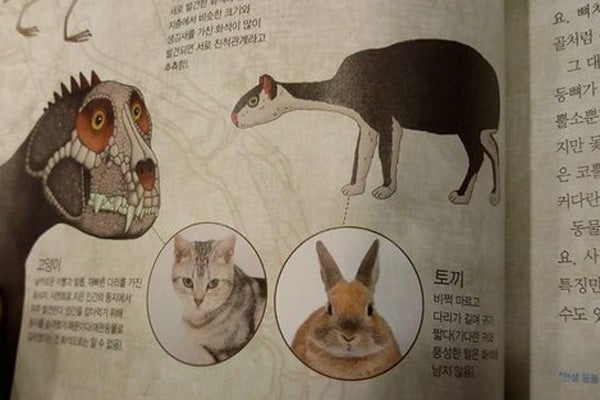
The scaly-faced cat and stretch-necked rabbit are by John Conway... or are they redrawn versions of John Conway's images? Not sure...
Coincidentally, mid-2015 also saw All Yesterdays receive coverage in a Korean science magazine for children. Can’t say that I’m especially happy to see the artwork get reproduced without appropriate permission or recompense (some extensive and honest apologies were provided), but I suppose it’s all good publicity. Hey, you can buy All Yesterdays here.
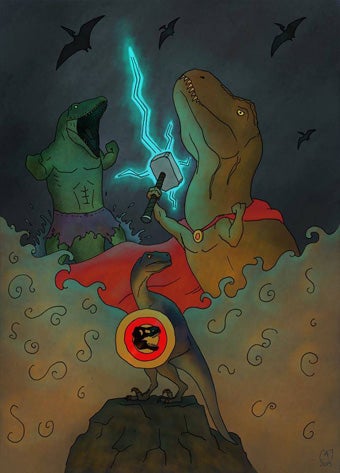
Dino-Avengers!! Image by Christian Juul.
Inspired by a discussion John Conway and I had about the then-new movie Avengers: Age of Ultron on the TetZoo podcats (I think episode 42), Christian Juul saw fit to create Dino-Avengers…
And the end of June saw the publication of another technical paper – a re-evaluation of the Romanian maniraptoran theropod Balaur bondoc (Cau et al. 2015) co-authored by Andrea Cau, Thomas Brougham and myself. The paper appeared in the open access journal PeerJ and was covered on Tet Zoo here.
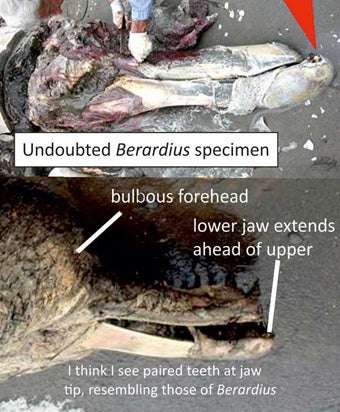
At top: an undoubted Berardius specimen from California, Below: the head of the Sakhalin Island 'monster' carcass of June 2015.
Regular readers will be familiar with the coverage of sea monster carcasses that’s appeared here over the years. A carcass is photographed… journalists say that it’s “unidentifiable” or “baffling”, yadda yadda yadda… photos reveal that it sure can be identified, often pretty easily. And such it was with the Sakhalin Island carcass of June 2015. Examination of the photos showed, pretty conclusively, that it was a Berardius, as was the Sakhalin Island carcass of 1986 (that one was claimed to be an ‘archaeocete’ carcass: I covered it at ver 2 during 2009). And this 2015 monster wasn’t the only ‘sea monster’ to be debunked during the year – read on.
Dave Hone and I had special behind-the-scenes access on a Marwell Wildlife trip during the month and got to see various animals (most notably lizards) yet to be out of quarantine. Many thanks indeed to Dan Garrick for his help with this.

Some of the domestic animals I saw during 2015. Clockwise from top left: Highland cattle, Wyandotte rooster, Leghorn(?) rooster, Chamo rooster, donkeys. Photos by Darren Naish.
During July, Tetrapod Zoology saw articles on the spiral-burrowing behaviour of Yellow-spotted goannas Varanus panoptes, placental mammal phylogeny, pangolins and skunks. I went to the New Forest Show in late July. This is always great for spectacular, often obscure domestic animals. I also finally succeeded in photographing the suburban Roe deer Capreolus capreolus that come to within just a few metres of my front door, look… (I’ve photographed their tracks before, but never been able to get any shots of the deer themselves).
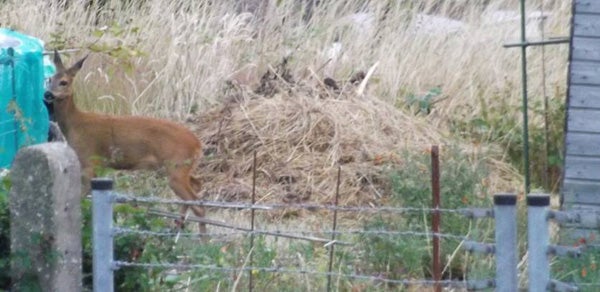
Suburban Roe deer. We take it for granted that big mammals like this now routinely occur in suburban environments, but that's a pretty radical thing if you think about it. Photo by Darren Naish.
Much of July and August was taken up with conference preparation. Well, actually, the whole middle part of 2015 was occupied with two grand book projects. During June and July I wrote the better part of a dinosaur-themed book (it’s due out later in 2016), and during July, August and September I wrote a cryptozoology-themed book (also due out at some point during 2016). Throughout all of this time, and before, and after, I also continued to put together the textbook I’m working on. Writing books is a full-time endeavour and taking on a few books at the same time, while juggling life, children and other stuff in the meantime, is definitely the sort of thing that can lead to emotional and psychological breakdown, seriously.
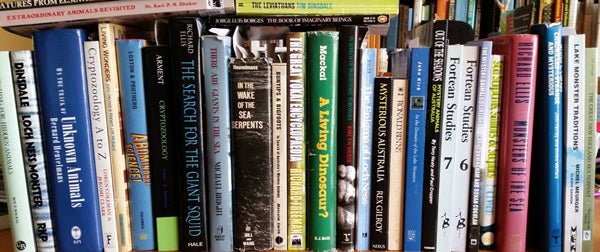
A small clue as to something I was putting together during the summer of 2015.
Anyway, I covered plethodontid salamanders in a fewTet Zoo articles from August and also reviewed Marc Boulay and Steyer’s amazing new book Demain, Les Animaux du Futur (Boulay & Steyer 2015). Did you know that an English edition is set to appear at some point in the near future?
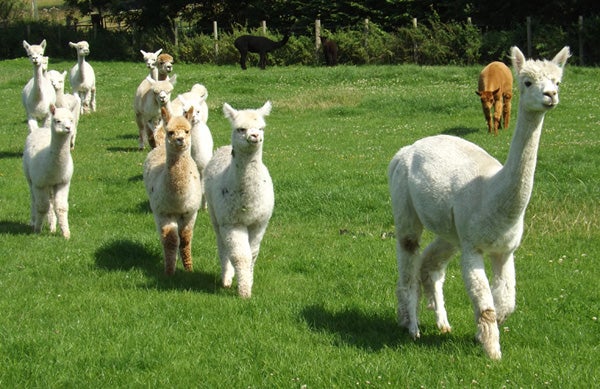
Alpacas. So fluffy. Photo by Darren Naish.
At the end of August I attended the 5th pterosaur meeting at the University of Portsmouth where I spoke about current thoughts on azhdarchoids from Romania and (with colleague Liz Martin-Silverstone) nerve distribution in pterosaurs. This will all be discussed in assorted papers in-prep; my thoughts on this very fun meeting were covered here. My review of the brilliant Kinnaird & O’Brien Asian hornbills book (Kinnaird & O’Brien 2007) appeared in print (Naish 2015). I attended an alpaca-themed event and looked after an alpaca.
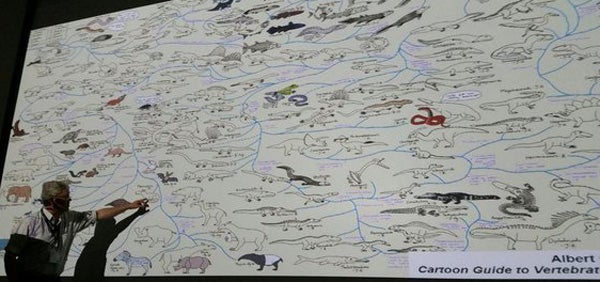
Well, there's something you don't see every day. Alberta Claw's Cartoon Guide to Vertebrate Evolution, as featured in David Unwin's talk at SVPCA 2015. Photo by Darren Naish.
September started with the SVPCA (= Symposium on Vertebrate Palaeontology and Comparative Anatomy) meeting, this year held at Southampton’s National Oceanography Centre (my own academic base). I discussed recent work on Balaur, azhdarchids and Cretaceous lizards (more on these subjects later, possibly) and was also an author on Mike Taylor et al.’s fighting sauropod talk, Mark Witton et al.’s palaeoart talk (see Witton et al. 2014) and a few others.
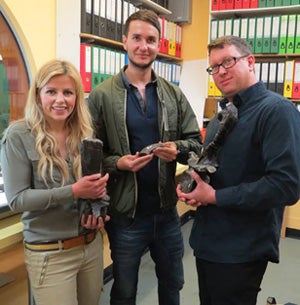
A behind-the-scenes scene from Dinosaur Britain. L to r: Ellie Harrison, Dean Lomax, Darren Naish. We're holding key elements of Neovenator and an associated Mantellisaurus.
During June I’d worked with Dean Lomax and presenter Ellie Harrison in the making of a two-part documentary series – Dinosaur Britain – that was effectively a TV spinoff of Dean’s 2014 book Dinosaurs of the British Isles (Lomax & Tamura 2014), itself reviewed here during March. This was screened early in September and my segment (on the palaeopathologies of the Lower Cretaceous dinosaurs Neovenator and Mantellisaurus*) was essentially shown in full… I mean, it wasn’t pared down to a few seconds-long soundbites, as usually happens. My thanks to Dean for setting up this opportunity.
* This is yet another of those academic projects where the full technical paper has yet to see print. I blame co-authors.
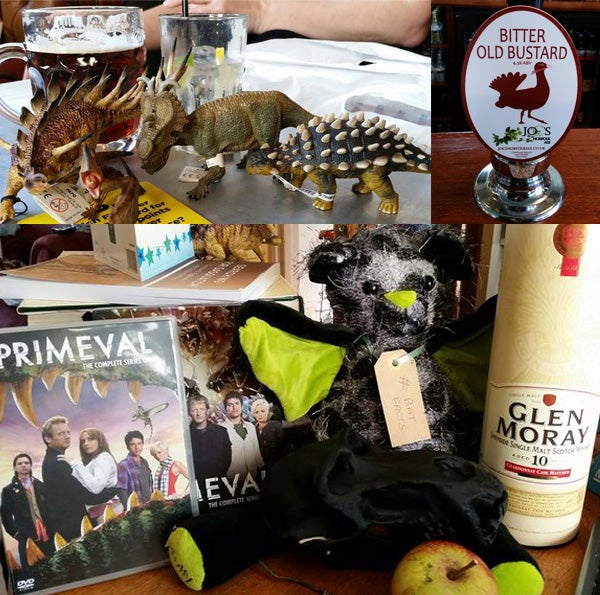
Some birthday-themed things. Spot the 3D printed black baboon skull and Vlad the #batfacts bat. Thanks to those who so kindly provided these excellent gifts.
September was another busy month. I finished the cryptozoology book (well, the text), went out a lot due to one of those milestone birthday events, and the ball got rolling on a big, significant project that I won’t be talking about again until 2017. The lecture season started… with fish. And fish were there the whole while, with the lobefin chapter of the Big Book being (essentially) finished in October. Incidentally, you can get some idea of progress on that book (and see images in-prep) by supporting me at patreon. Galliwasps, unusual giraffe deaths, Piltdown man, bird phylogeny and fighting sauropods, dendromurine mice and corvids were all covered on the blog during that month. And September 22nd was World Rhino Day, so I rushed out a blog article on rhinos.
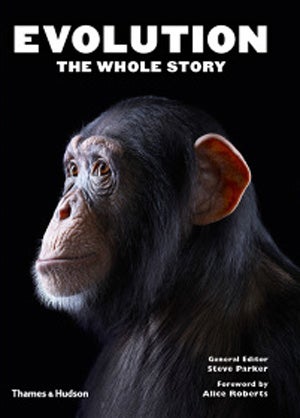
Cover of Parker (2015). A chimp on the cover. Hmm, ok.
A large popular book that I’d written during the summer of 2014 – a multi-author work led and edited by Steve Parker and featuring a foreword by Alice Roberts – appeared in print during August or September. It’s called Evolution: The Whole Story (Parker 2015) and it’s not bad at all. I’m one of 11 authors and you can see who did what thanks to the initials included after each section (a nice touch). I did some of the dinosaur sections as well as various non-dinosaurian reptile and mammal sections. Had no involvement at all as goes the choice of pictures… there’s some brilliant stuff in there but some unbearable atrocities too. Anyway, the book did very well over the Christmas period and has received some very positive reviews. A multi-authored paper on our current understanding of Upper Cretaceous vertebrate faunas in Romania appeared during September (Csiki-Sava et al. 2015). It was discussed here on Tet Zoo.
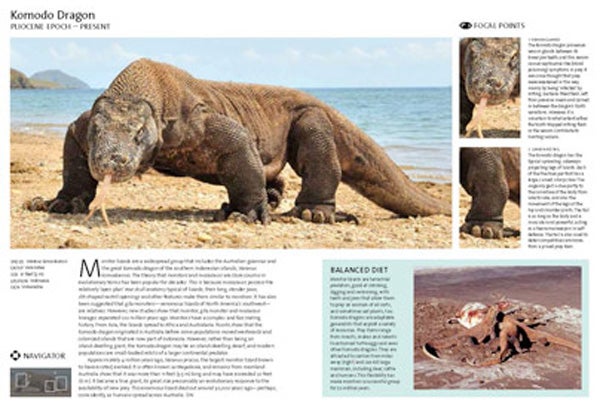
Here's what Evolution: The Whole Story looks like on the inside. This spread is one of mine. Sorry for the low-res.
As I’ve said already, over the years I’ve often had cause to comment on alleged ‘sea monster’ images. November 2015 saw the newest of these: a single photo of a grey, smooth-skinned, flat-snouted beast taken by Scottish tourist Harvey Robertson while he was in a boat off the coast of Corfu, Greece. Robertson’s photo was claimed by some to be a new sort of marine mammal that defied explanation, perhaps a cetacean or hippo relative of some sort. However, many people noted the possibility that it might actually be a photo of a plastic bottle or bit of junk. After a few days of seeing headlines and linked new stories on the ‘monster’, I finally decided to check it out. It immediately occurred to me that it might actually be a photo of a freeboard boat fender (an inflatable device used to protect boat hulls from dock walls, jetties and so on), its outline and shape distorted by refraction.
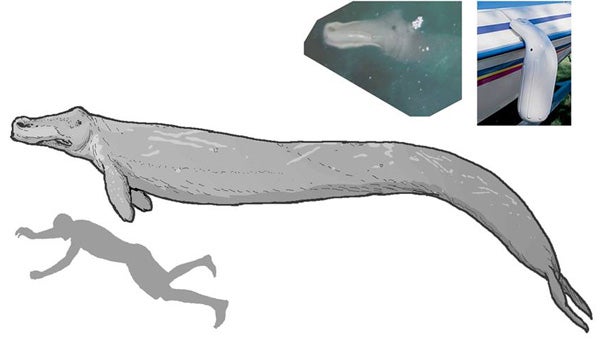
Memo Kosemen's imaginary interpretation of Harvey Robertson's Greek sea monster (shown at upper right)... which is almost certainly a curved freeboard fender like that shown at top right.
Ben Radford wrote about this proposed identification, resulting in widespread coverage. And well done to those clever individuals who sought to debate this by claiming that a monster identity was more likely than the fender one.

Much of November was taken up with preparations for the second TetZooCon, the event itself happening on the 14th of that month. My thoughts are here. TetZooCon 2015 was a great success, even though we aren’t exactly raking in the sort of financial return that might be appropriate (read: covering our time and expenses and making a modicum of profit). As I’ve already said, the plan is for TetZooCon to become a two day thing that hosts more content and is bigger and better overall. We’ll get there eventually.
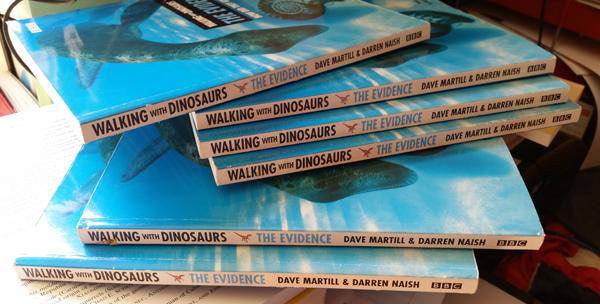
At TetZooCon I mostly sold my pile of Walking With Dinosaurs: The Evidence (Martill & Naish 2000).
Thanks once again to those who gave their time and expertise: to Matt Salusbury, Vicky Coules, Jessica Lawrence-Wujek, David Lindo, Katrina van Grouw, Bob Nicholls, Mark Witton and everyone else. We already have several speakers lined up for the 2016 event (date and venue yet to be confirmed, stay tuned and join the facebook group).
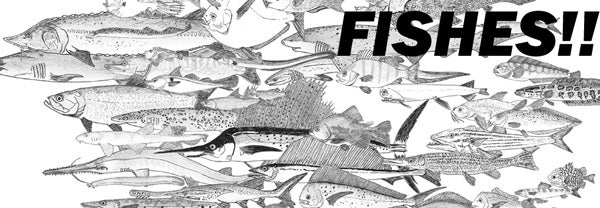
Do you know how many fish I've drawn? Hundreds and hundreds and hundreds...
I lectured a lot during the last months of the year… in fact, I pretty much did nothing else apart from prepare lectures (bit of a backstory there). I also spent weeks and weeks and weeks and weeks working on the actinopterygian chapter of the Big Book, but the less said about that the better. Fossil hippos and treeshrews were covered on the blog at about this time and December saw John and I record the 50th episode of the podcast (that particular episode isn’t released at the time of writing – we’re still editing it).
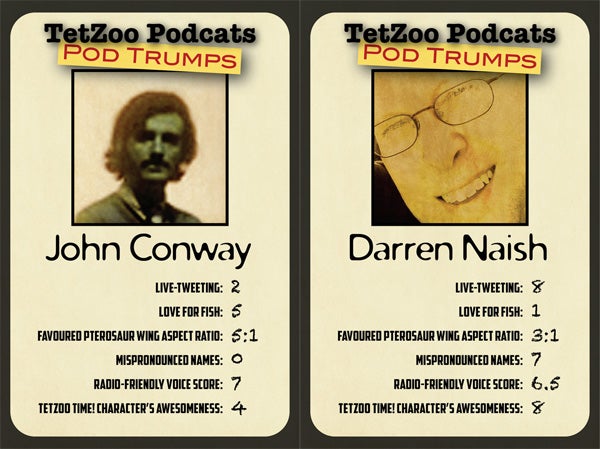
TetZoo podcats top trumps is hard to play because there are only two cards in a pack, but what the hey. Available here.
And so we come to January 2016, and the weeks just prior to the actual 10th birthday event of the 21st. An escalating workload remains an issue, as does lack of time regarding the completion of many planned technical projects, but I’m sure this is true for everyone. During December, Liz Martin-Silverstone interviewed me for the Palaeocast podcast, and the relevant episode (57) was released early in January. It’s mostly about Wealden dinosaurs but we also talk about plesiosaurs and other tetrapods from the Wealden.
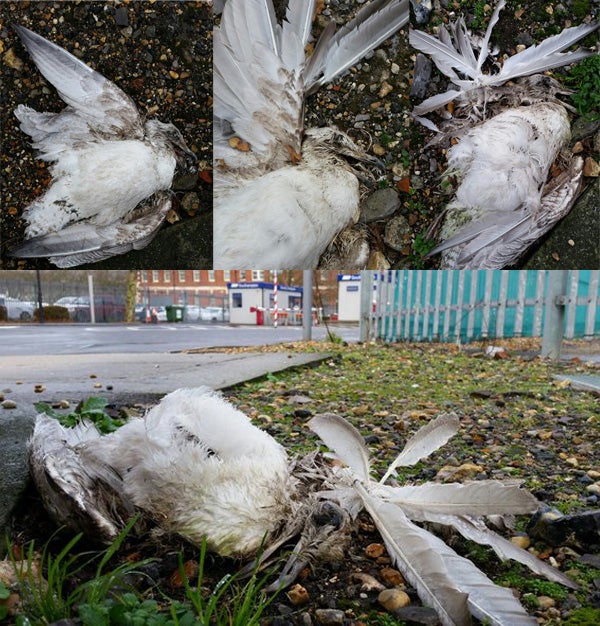
Over the course of September, October, November and December, I kept regular watch on a decomposing Herring gull Larus argentatus. Here's a montage, showing an increasing amount of dishevelment and skeletonisation. Photos by Darren Naish.
And I think that’ll do. While this (and the previous article) serve as a messy overview of most things I’ve done and been involved in, these musings are meant to mostly be about progress and coverage at the blog. So – what about that? Well, that’s what I intend to look at next. I can tell you that the news is not good...
For the previous Tet Zoo birthday articles, see...
It is with some dismay that I announce Tet Zoo's first hemi-decade
Tetrapod Zoology 10th-Birthday Extravaganza, Part 1: 2015 in Review
Refs - -
Boulay, M. & Steyer, S. 2015. Demain, les Animaux du Futur. Éditions Belin, Paris.
Csiki-Sava, Z., Vremir, M., Vasile, S., Brusatte, S. L., Dyke, G., Naish, D., Norell, M. A. & Totoianu, R. 2015. The East Side Story – The Transylvanian latest Cretaceous continental vertebrate record and its implications for understanding Cretaceous-Paleogene boundary events. Cretaceous Researchhttp://dx.doi.org/10.1016/j.cretres.2015.09.003
Lomax, D. & Tamura, D. 2014. Dinosaurs of the British Isles. Siri Scientific Press.
Parker, S. 2015. Evolution: The Whole Story. Thames & Hudson, London.